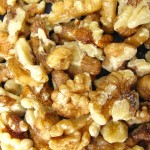 If you’ve recently joined a gym or enlisted the guidance of a Fitness Professional, you may be asked to provide a Medical Clearance to Exercise.
If you’ve recently joined a gym or enlisted the guidance of a Fitness Professional, you may be asked to provide a Medical Clearance to Exercise.
Medical Clearance to Exercise: Necessary or Waste of Time?
Is medical clearance to exercise really important?
Yes. Safety is top priority. We want you to get in a great workout, and we want to be sure you’re doing it in a safe manner.
How to obtain medical clearance to exercise? Getting medical approval prior to starting an exercise program shouldn’t be difficult. Your Fitness Professional should hand you a form for your physician to review and sign. Call your doctors office and simply request that your physician review and email/fax/mail in your facility’s clearance form. Once it’s received and discussed with your Fitness Professional, you can usually begin your workout immediately.
What if you don’t have a regular doctor to review the form? Ask your friends for the name of their doctor. Having a doctor who is familiar with your health history is of benefit to everyone. Make an appointment and proceed from there.
WHY is medical clearance important? Exercise should be enjoyable and effective. There are many medical issues that may affect the type, duration or intensity of exercise you should be performing: high blood pressure, heart rate limitations, bone or joint injuries and others. You may not even be aware of your medical conditions until consulting with your doctor. It is very important that your fitness instructor or gym facility knows that you may have some restrictions before beginning an exercise program because:
A) we don’t want you to get hurt or further injured.
B) you may not be able to reach your goals as quickly or effectively without some modifications due to your considerations.
Once medical clearance has been accepted, you’ll be on your journey to better health!
Follow Sarah on Twitter @SarahJChicago
 Subscribe
Subscribe







